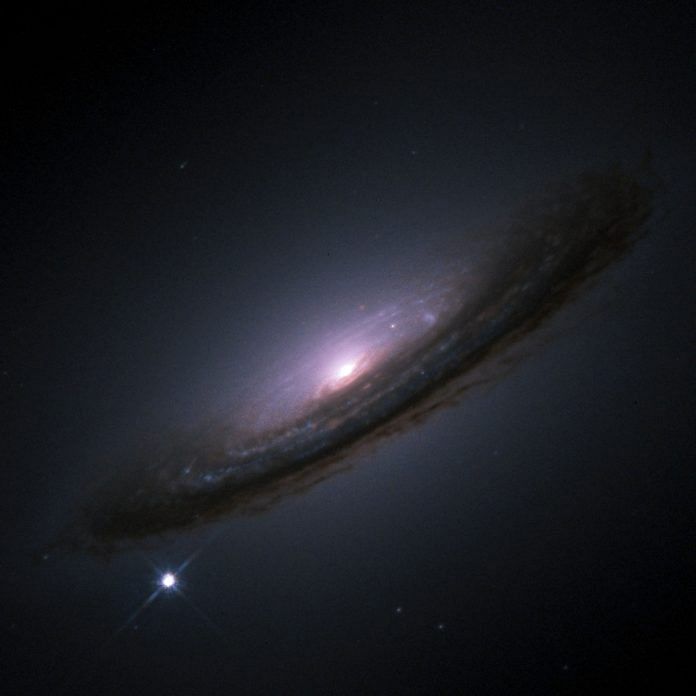Bengaluru: A new supernova sprung up in the night sky last week, showing up as a bright star in the Pinwheel Galaxy (Messier 101), and visible through binoculars and telescopes.
Named SN 2023ixf, this is the supernova closest to Earth in the past five years and is the second supernova to be found in the Pinwheel Galaxy in the past two decades.
A supernova refers to the explosion of a massive star towards the end of its life, which is a powerful and luminous phenomenon and can often be brighter than the galaxy it is located in.
The new supernova is the death of a star that was many times larger and more massive than our Sun, located nearly 21 million light years away from Earth, in one of the arms of the spiral Pinwheel Galaxy.
It was reportedly first detected on 19 May by renowned Japanese amateur astronomer Koichi Itagaki. Since its discovery, amateur astronomers globally and from India have captured images of the supernova with their telescopes and camera.
It has been classified as a Type-II supernova, where the star runs out of fuel in its core to fuse and collapses into itself under the weight of its own gravity.
It has been steadily increasing in brightness over the past 48 hours, and is expected to become even brighter over the next few days.
Also read: What caused rare 2015 supernova? Indian astronomers on space quest trace it to rarer star
The ones seen by our ancestors
Supernovae appear in the sky like a bright star overnight. Most are spotted through telescopes, such as SN 2023ixf. While they are not that uncommon as a phenomenon in the universe, the ones that can be seen with the naked eye are quite rare.
In fact, sky surveys and telescopes now regularly detect thousands of supernovae every year, discovering as many as 10 or more per day, according to reports.
These explosions in the sky have been visible as star-like dots to our ancestors as well, when they were exceptionally bright.
The first recorded observation of a supernova in human history occurred in 185 CE in China and Rome, which documented a supernova — now identified as RCW 86 — that was visible in the sky for eight months. A subsequent supernova, now named G347.3-0.5, was visible in the night sky, as bright as Jupiter, in 393 AD.
In the year 1006 AD, a supernova became bright enough to be visible during the day, and was recorded globally. SN 1604, which was studied intently by astronomer Johannes Kepler and now called Kepler’s Supernova, was also visible bright in the day and night sky for a year.
There are more records of such new “stars” appearing overnight in the bright sky throughout recorded history.
Collapse, implode and explode
There are two main broad types of supernova — Type I and Type II, which are further divided into subtypes.
Type Ia supernova occurs when a white dwarf either grows too massive or is sucking up mass from another star. This star is typically 1.4 times the mass of the sun before explosion. Type Ib and Ic supernovae occur when a star that is at least 25 times the mass of the sun sheds its outer material collapses, implodes, and then explodes, leaving behind a white dwarf.
All these subtypes of Type I occur due to thermal runaway reactions, where the stars acquire enough mass to ignite carbon fusion in their cores, which then destroy the star.
Type II supernovae occur due to core collapse, where very massive stars collapse under their own weight and gravity, in a violent explosion. Depending on the mass of the star before collapse, the remnant can be either a neutron star or a black hole.
The remnant of the SN 2023ixf explosion has not yet been identified in its early stages, study of additional light curves will determine whether a neutron star or a black hole is left over.
The risk from shock waves
When a star explodes or sheds its outer layers, material is expelled with so much force that it travels at supersonic speeds, preceded by a very strong shock wave. While the shock wave slows down over time as it expands, it could take thousands of years before its speed falls below the speed of sound.
When planets are in the way of such shock waves from supernovae, any life on them is at risk from radiation and destruction. At a safe distance, they seem to affect chemical changes that can cause large-scale modifications in a planet’s biochemistry.
It is theorised that cosmic rays from supernovae entered our solar system in the past, colliding with the Earth’s atmosphere and ionising it. This in turn created aerosols, leading to formation of clouds and ozone, protecting the earth from Sun’s radiation, some experts believe.
Supernovae within a radius of 50 light years to Earth are believed to be in the “kill zone” for Earth, threatening life and causing mass extinctions. The ones that could erupt within a 150-light-year radius will likely increase the risk of cancer due to radiation for a major part of the world’s population, reports suggest.
The closest supernova recorded in history was likely a 1998 remnant found from an explosion 800 years ago, at a distance of about 700 light years away. According to available information, the most recent supernova within our galaxy was the Kepler supernova which occurred 400 years ago.
SN 2023ixf is so far the closest supernova to Earth observed in the past five years, at 21 million light years. Meanwhile, astronomers are still keeping an eye out for the star Betelgeuse to explode in celestial fireworks, which could happen any time within the next 100,000 years.
(Edited by Poulomi Banerjee)
Also read: All about micronova, newly discovered type of star explosion that may be common but hard to spot



